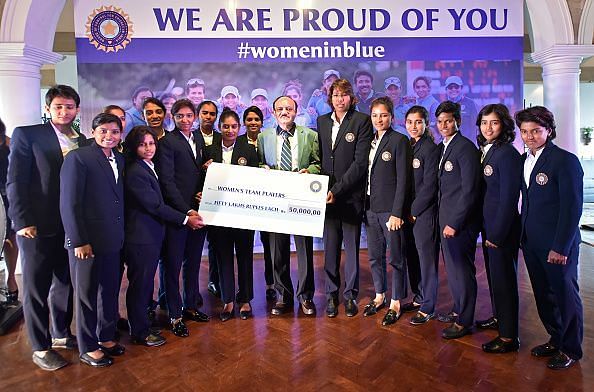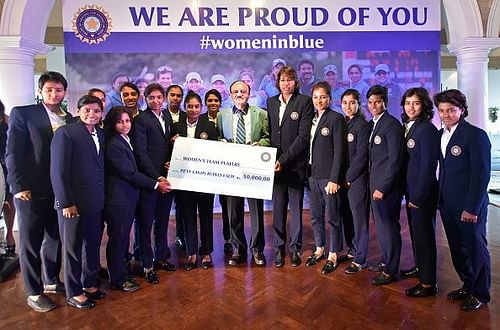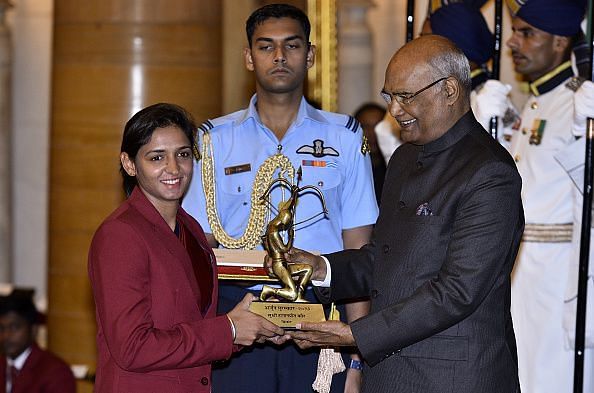
Two months on from Lord's, where are India Women?

As the incredulous tete-a-tete between the BCCI and CSA reached a consensus, even as India almost succeeded in ruining South Africa's boxing-day party and the hosts barely managed to save that from happening, it is now clear that India would play three Tests, six ODIs, and three T20Is on their tour to the rainbow nation from December 2017 to February 2018.
What is also clear is the itinerary for the limited-overs women's series between India Women and South Africa Women starting February 5, which comprises of three ODIs and five T20Is. Seven of these eight international games would coincide with the men's fixtures, in a bid to popularize the women's game and give it a sliced limelight, if I dare say, borrowed from the men's internationals.
As far as India Women are concerned, it would be the first time they'd take the field since that final at Lord's; a final that had changed, or perhaps bordered on changing, the landscape of women's cricket in India. Two months have, however, not changed or don't seem to have changed how the BCCI looks at the state of the women's game in the country.
When CoA member Diana Edulji says that the BCCI is a 'male chauvinist' organization two months after the women's team's successful run in the 2017 World Cup, it is supposed to turn heads and make people gasp. The terminology, as well as the intent with which it was used, were directed at the board's negligence at putting pen to paper to bring more women on the field even as the ones who set the trend and sent the country into a frenzy occupied front pages of magazines and prime-time slots on television.
"BCCI is a very male chauvinist organization. They never wanted women to dictate terms or get into this thing. I was very vocal right from my playing days, from when I started. Even now, I would still say that it is not yet well accepted within BCCI that women's cricket is doing well. It is very difficult for them (some BCCI members) to accept the fact that this team has done very well," Edulji had said on August 24.
If viewed objectively, Edulji's blunt albeit honest statement has some merit to it. In the time between July 23 (the day of the final) and September 27, when the itinerary of the South Africa tour was announced, only one competitive cricket match certified by any of the state cricket associations in India was played by the members of the team that played the world cup final. It was an exhibition T20 game, played between the KSCA President's XI and Secretary's XI on September 23, as a prelude to the KPL 2017 final.
Veda Krishnamurthy and Rajeshwari Gayekwad -- from the world cup squad -- played that game, while Vanitha VR and Karuna Jain were the other India internationals to feature. The ICC's calendar on its website displays no schedule for India Women until the end of the year and nor does the BCCI portal.
One could have expected that to change, but for a layman, India Women are now a thing of the past. They are like the crackers he buys for Diwali, with a short life-span, no guarantee of entertainment value and a method of momentary joy. Perhaps the board is the best reader of the shelf-life of this internet generation's memories.

Mithali Raj has drifted from the centre of the pitch to the cover pages of several magazines, with an avatar that can be easily distinguished from how she was last seen in India colours. Harmanpreet Kaur is now an officer in the Punjab Police and occasionally appears on TV shows. Shikha Pandey is an Air Force officer.
Veda is seen shooting live videos for campaigns and promotions and was recently roped in by the Belagavi Panthers franchise of the KPL as their brand ambassador.
I was optimistic about a woman cricketer becoming the face of a men's team and queried the owner of the franchise about the thought process behind such a move. His response and the cover-up done by the team manager thereafter were both laughable and disappointing.
"We wanted to bring in a glamour angle to the KPL. We roped in Veda because she is a lady and she brings glamour to the side," the owner had said at a pre-season press conference.
Later, after the interaction, the team manager walked up to me and clarified as to what the owner meant by the 'glamour angle.' He talked me through how T20 leagues bank on glamour as much as the talent of the players and how brand endorsements have become a necessity in the era of professional T20 business.
When I asked him whether Veda would be involved with the players in any capacity, he said, "No, she won't be there with the players. She is just the brand ambassador."
I had interviewed Veda a few days after this move was made public. I had asked for her opinion about this association.
"I was pretty excited the first time I got a call, and I said yes. I just googled Belagavi Panthers; I wanted to know who all are there in the team. Obviously, they would look at us and say, 'okay fine, a woman cricketer has done so well.' Probably they'll feel it's a chance for us to do well as well," she had said at the time.
From what was seen during the Hubli leg of the league, Veda was present at the venue for most of Belagavi's games and was seated on the cushions next to the owner, just outside the pavilion. The owner certainly had the 'glamour' he was looking for.
Well, what else could have I, or anyone for that matter, have expected from a brand ambassador? I am a novice at providing brand solutions, so from a layman's view, I could only see that they are there to build the image of the brand, and maybe not necessarily of the machinery that goes behind building the brand. In this case, that machinery is a cricket team.
The reason for my optimism was the ambassador's relation to the product she was promoting. This was a cricketer promoting a cricket team. Would the management not have sought the advice of someone like Rahul Dravid, if he would have been in Veda's shoes? But then, they had Marvan Atapattu in their team of support staff.
More than what Veda's role was with the team, how the team management perceived her role was what seemed questionable. Years after taking the cricket field and more than a decade after coming under the BCCI's tutelage, female professional athletes are still being reduced to a glamour quotient.
Also, how was Veda available for Belagavi for almost the entire season? Because she wasn't playing any cricket. How often can the men's team afford a three-month layoff after a world cup?
From what we can make out after looking at the juggling and shuffling of matches in the South Africa itinerary, it is clear that the Future Tours Programme (FTP), if at all was in place for the women's team, hasn't been looked after well by the BCCI.
The column under 'Women's Domestic' tab on the BCCI's website is empty. So one can safely conclude that no domestic cricket has been planned by the board in the foreseeable future.
Meanwhile, the Duleep Trophy final has only just concluded. Oh, and just to remind, this tournament was scrapped and reinstated within the span of a week and the board had enough time to put in place the logistical arrangements, although not to the complete satisfaction of the ICC.
One stops and wonders here, looking at the way the Duleep Trophy got running, whether the BCCI would have faced even half as many logistical problems if they were to organize a women's first-class match to begin alongside the tournament opener on September 7 to mark the beginning of the Indian domestic season.
On June 6, Gaurav Kalra, a senior journalist, was invited by the BCCI for a media training session in Mumbai. All members of the squad, which was to depart for England in a few days' time, were present. He urged the women to present their story with honesty and clarity so that the world could get a first-hand view of the struggles and sacrifices that made them the cricketers they are.
On that day, Harmanpreet Kaur had raised an important question. "Sir, aap bol toh rahe ho ki apni story batao," she said. "Hum toh tayyar hain, par koi sunna hi nahin chahata." [Sir, you are asking us to tell our stories. Well, we are ready to do so but no one seems interested to listen]"
Fortunately, there are so many of us who would want to listen to th Kaur's story -- this writer included -- but the men who must necessarily lend their ears seem to have not cleared the wax periodically.